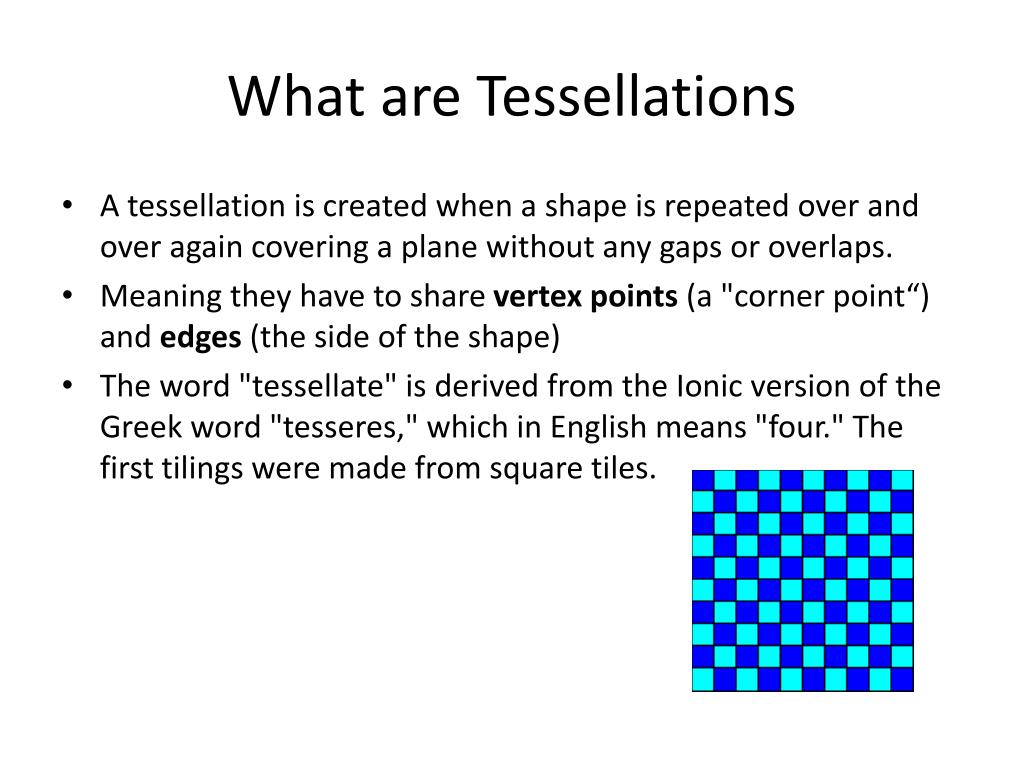

While the paper has yet to be peer-reviewed, the experts interviewed for this article agree that the result seems likely to hold up to detailed scrutiny. By comparing shapes at the extremes of this family, one shaped like a chevron and the other reminiscent of a comet, the researchers were able to show that the hat couldn’t form a pattern that repeats. In this video, the hats morph into these different shapes. The hat is one of a family of related tiles with many different shapes. Mathematicians found the first true “einstein,” a hatlike shape that can be tiled to cover an infinite plane, but with a pattern that can’t repeat. By considering the relative sizes and shapes of the tiles at the extremes of that family - one shaped like a chevron and the other reminiscent of a comet - the team was able to show that the hat couldn’t be arranged in a periodic pattern. The second proof relied on the fact that the hat is part of a continuum of shapes: By gradually changing the relative lengths of the sides of the hat, the mathematicians were able to form a family of tiles that can take on the same nonrepeating pattern. This approach revealed that the hat tiling could fill an entire infinite plane, and that its pattern would not repeat. Those metatiles then arrange into even larger supertiles, and so on indefinitely, in a type of hierarchical structure that is common for tilings that aren’t periodic. One came from noticing that the hats arrange themselves into larger clusters, called metatiles. Smith and colleagues proved that the tile was an einstein in two ways. “This is the first solution without asterisks,” says mathematician Michaël Rao of CNRS and École Normale Supérieure de Lyon in France. Taylor-Socolar tiles are aperiodic, but they are a jumble of multiple disconnected pieces - not what most people think of as a single tile. Parcly Taxel/Wikimedia Commons ( CC BY-SA 4.0) But Taylor-Socolar tiles have disconnected pieces (illustrated), stretching the definition of a tile. Taylor-Socolar tiles are the closest mathematicians had come previously to an “einstein,” a single tile that forms a pattern that never repeats. That one has finally been found, “it’s huge.” From there, “It was natural to wonder, could there be a single tile that does this?” says mathematician Casey Mann of the University of Washington Bothell, who was not involved with the research. In the 1970s, mathematician Roger Penrose discovered that just two different shapes formed a tiling that isn’t periodic ( SN: 3/1/07). Mathematicians previously knew of nonrepeating tilings that involved multiple tiles of different shapes. Before this work, if you’d asked what an einstein would look like, Goodman-Strauss says, “I would’ve drawn some crazy, squiggly, nasty thing.” That’s a type of shape that hadn’t been studied closely in the search for einsteins, says Chaim Goodman-Strauss of the National Museum of Mathematics in New York City, one of a group of trained mathematicians and computer scientists Smith teamed up with to study the hat. Identified by David Smith, a nonprofessional mathematician who describes himself as an “imaginative tinkerer of shapes,” and reported in a paper posted online March 20 at, the hat is a polykite - a bunch of smaller kite shapes stuck together. The “hat” (one highlighted) is a polygon made up of eight smaller kite shapes (dark gray lines). While it’s possible to arrange other single tiles in patterns that are not periodic, the hat is special because there’s no way it can create a periodic pattern. An infinite checkerboard, for example, looks just the same if you slide the rows over by two. With a periodic pattern, it’s possible to shift the tiles over and have them match up perfectly with their previous arrangement. Though the tiles fit neatly together and can cover an infinite plane, they are aperiodic, meaning they can’t form a pattern that repeats. The einstein sits in a weird purgatory between order and disorder. “It wasn’t even clear that such a thing could exist,” Senechal says.Īlthough the name “einstein” conjures up the iconic physicist, it comes from the German ein Stein, meaning “one stone,” referring to the single tile. Mathematicians had been searching for such a shape for half a century. “Everybody is astonished and is delighted, both,” says mathematician Marjorie Senechal of Smith College in Northampton, Mass., who was not involved with the discovery. It’s the first true example of an “einstein,” a single shape that forms a special tiling of a plane: Like bathroom floor tile, it can cover an entire surface with no gaps or overlaps but only with a pattern that never repeats. A 13-sided shape known as “the hat” has mathematicians tipping their caps.


 0 kommentar(er)
0 kommentar(er)
